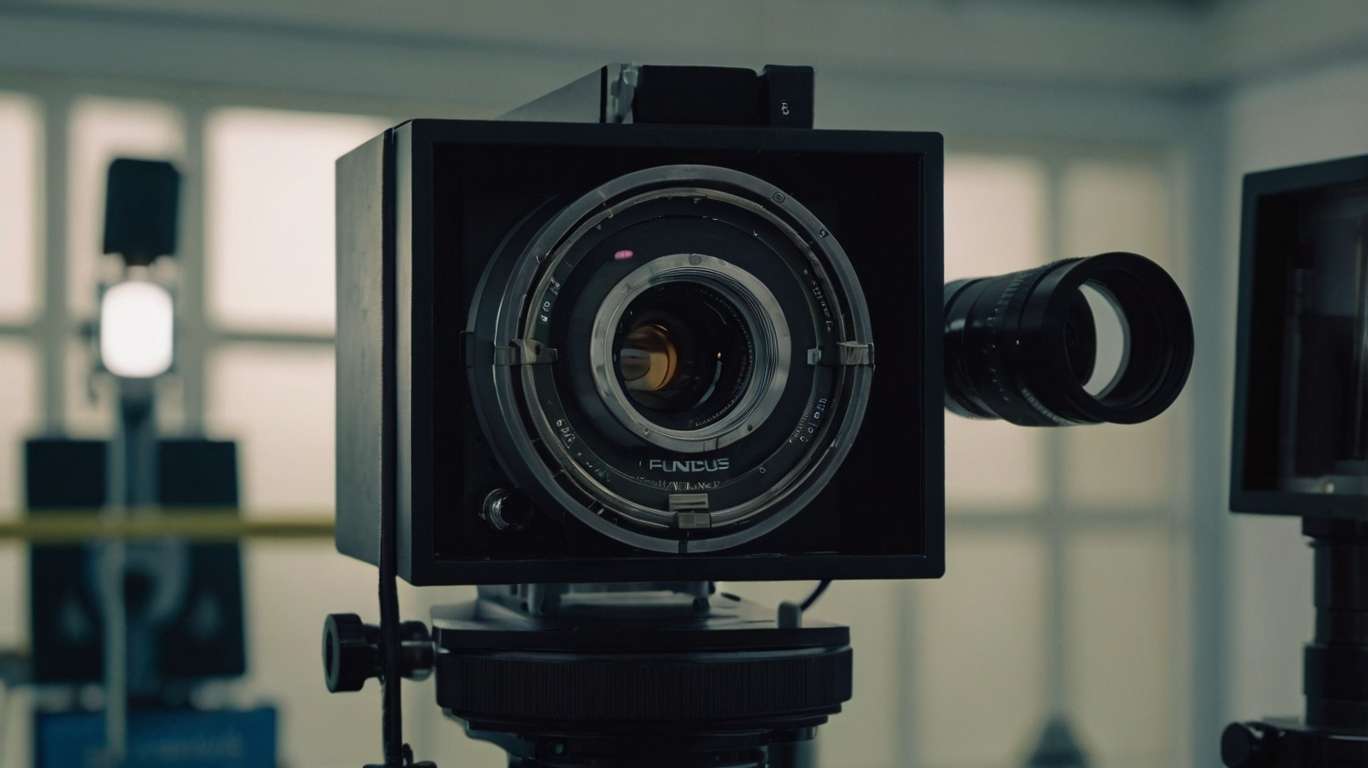
Blogs
Choosing the Right Fundus Camera: Mydriatic vs. Non-Mydriatic and Their Applications

Fundus cameras are like the backstage passes of eye care. If your eyeballs are throwing a tantrum because of diabetes, glaucoma, macular degeneration, or even just high blood pressure, these little machines are the ones catching all the action. They capture these amazingly sharp images of the back of your eye. This way, your eye doctor can track changes, spotting the issues early, and keeping your vision in check.
Fundus cameras are not one-size-fits-all. Some of them, such as mydriatic ones, require dilation. But the non-mydriatic cameras? No drops, just snap and go. That one little difference —dilate or don’t—decides how these cameras are used in the clinical environment. Some doctors prefer the traditional approach, while others opt for a quicker and easier method. Either way, these cameras are the unsung heroes, ensuring your eyes stay out of trouble.
What is a Mydriatic Fundus Camera?
Traditional mydriatic fundus cameras require the instillation of mydriatic eye drops to dilate the pupil before image acquisition. Clinicians dilate the pupil to have a wide, clear view of the retina, especially in the peripheral regions.
This technique reliably delivers the best images because the camera can focus and operate at its level of excellence. A full range of applications makes these units the best choice when combining wide-field imaging, fluorescein angiography (FA), indocyanine green angiography (ICG), or mydriatics in general.
However, dilation is not without cost; applying the drops may take time, typically requiring 15 to 30 minutes before any effect is noticeable. Patients may suffer ill effects during that time. Brightness and blurriness are also effects that can persist for several hours after the examination, which can be inconvenient for patients who plan to return to work or drive. This can also be a problem for those with narrow-angle glaucoma and those allergic to the use of eye drops.
Nonetheless, mydriatic fundus cameras would remain the best in their class under the gold standard set, especially in specialized situations such as those typically found in ophthalmology clinics, where deep-seated retinal pathology needs to be well-documented and closely followed.
What is A Non-Mydriatic Fundus Camera?
In contrast, non-mydriatic fundus cameras feature a special design that enables the capture of a retina image even when the pupil is not dilated. These cameras capture images in the infrared frequency and are equipped with sophisticated optics, enabling them to map and image pupils as small as 3.5 mm in diameter. These cameras are widely used in various eyecare settings, including primary care clinics, diabetic retinopathy programs, and outreach programs.
All waiting time associated with dilation and patient discomfort is minimized with non-mydriatic systems. The exam can be completed within a few minutes, making it ideal for high-throughput situations and when rapid assessment is needed. The patient can resume several activities immediately after the test, promoting compliance and overall satisfaction.
Nevertheless, the usual disadvantage of a non-mydriatic system is the narrow field of view, which is often limited to 30 to 45 degrees, and is not able to adequately document peripheral retinal pathology as well as mydriatic systems do. Additionally, image quality may be compromised with small pupils, or in some patients with media opacities resulting from cataracts or vitreous hemorrhage.
Clinical Workflow and Patient Experience
|
Aspect |
Mydriatic Fundus Camera |
Non-Mydriatic Fundus Camera |
|
Patient Preparation |
Requires pharmacologic dilation (15–30 minutes wait time) |
No dilation needed; ready for imaging immediately. |
|
Appointment Duration |
Longer due to dilation and recovery time. |
Shorter, typically completed in a few minutes. |
|
Patient Comfort |
Causes include temporary discomfort, light sensitivity, and blurry vision as after-effects. |
Minimal discomfort and does not result in visual disruption after the examination session. |
|
Post-Exam Activity |
Patients may need assistance with transportation and daily tasks. |
Patients can resume normal activities immediately. |
|
Staff Involvement |
Additional staff may be needed to administer and monitor dilation |
Fewer staff resources required; simpler operation |
|
Workflow Efficiency |
A slower pace for in-depth exams. |
High productivity is suited for screening and routine documentation. |
|
Setting Suitability |
Ophthalmology clinics and retinal specialists will find them particularly effective. |
Perfect fit for primary care, community clinics, and telemedicine. |
|
Patient Compliance |
May be lower due to inconvenience and recovery time |
Higher compliance due to a fast, comfortable experience. |
Applications in Diabetic Retinopathy and Telemedicine
|
Aspect |
Mydriatic Fundus Camera |
Non-Mydriatic Fundus Camera |
|
Use in Diabetic Retinopathy (DR) |
Utilized to document advanced cases requiring detailed imaging and angiography. |
The best application is for routine DR screenings and early detection. |
|
Imaging Capabilities |
Fluorescein angiography (FA) and wide-field imaging are supported. |
Can only deliver standard central retinal imaging. |
|
Telemedicine Suitability |
A bad choice due to size, cost, and need for dilation |
Works well in telemedicine since it is portable, compact, and easily integrated with telehealth. |
|
Deployment in Remote Areas |
Not easy as the equipment has a complex design and dilation requirement. |
Works well in rural environments. |
|
Speed of Image Capture |
Slower; dilation is required before imaging. |
Fast - enables rapid image capture. |
|
Patient Population Focus |
Best for referred patients with complex or sight-threatening conditions. |
Ideal for screening large populations in primary care or diabetes clinics. |
|
Follow-up and Referral Use |
Best for confirmation diagnosis and treatment guidance. |
Used for triage, which involves positive findings referred for further evaluation. |
Cost Considerations and Practice Integration
|
Aspect |
Mydriatic Fundus Camera |
Non-Mydriatic Fundus Camera |
|
Initial Equipment Cost |
A high price tag, as it includes advanced imaging features and specialized functions. |
More affordable, suited for clinics with limited budgets. |
|
Operational Complexity |
Requires experienced personnel for dilation and imaging |
User-friendly, and only basic training is required. |
|
Space Requirements |
Bulky size that requires a dedicated imaging room. |
Compact and portable, it can fit in a smaller clinical space. |
|
Maintenance and Upkeep |
Maintenance costs are higher due to the more complex optics and accessories. |
Lower maintenance as it contains fewer moving parts and the design is simple. |
|
Practice Type Compatibility |
Best fit for specialty ophthalmology and retina-focused practice. |
Versatile and compatible with all types of practices: primary care, optometry, and general practice settings |
|
Scalability |
Less scalable in high-volume or mobile settings. |
Highly scalable; suitable for outreach programs and telehealth expansion. |
|
Return on Investment (ROI) |
Long-term ROI through advanced diagnostics and treatment planning. |
Faster ROI in screening programs as patient turnover is lower and the overhead is lower. |
Making the Right Choice for Your Practice
Choosing a fundus camera isn’t like picking out any ordinary gadget. It’s more about understanding the clinical setting and the nature of your work. You’ve gotta vibe with your workflow, know your patients, and keep your clinical goals in mind. Got a waiting room packed with folks needing diabetes screenings? Non-mydriatic is the perfect instrument for a speedy diagnosis: quick snaps, no dilating, excellent patient satisfaction. But suppose you’re the type who loves a good close-up, preferring to see every millimeter of retinal detail. In that case, there's nothing better than a mydriatic fundus camera with its big, bold, crystal-clear images—perfect for those high-stakes treatment choices.
No matter what, though, you’re always playing a balancing act: efficiency vs. image quality vs. patient comfort vs. what your inner perfectionist demands. Once you get a feel for these cameras’ quirks and superpowers, you’ll be serving up top-notch care and, let’s face it, feeling pretty slick about your gear choices.
